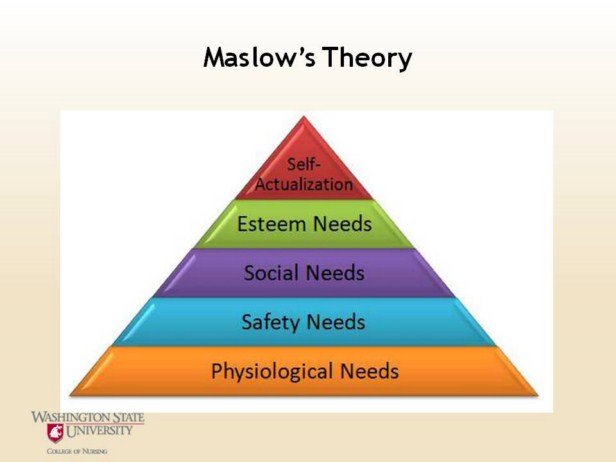| front |1 |2 |3 |4 |5 |6 |7 |8 |9 |10 |11 |12 |13 |14 |15 |16 |17 |18 |19 |20 |21 |22 |23 |24 |25 |26 |review |
 |
As we begin to discuss the CCM and methods of empowering patients, it is important to understand where patients are in their readiness to learn and take control of their diabetes.
The basis of Maslow's motivation theory is that human beings are motivated by unsatisfied needs, and that certain lower factors need to be satisfied before higher needs can be satisfied. According to Maslow, there are general types of needs (physiological, survival, safety, love, and esteem) that must be satisfied before a person can act unselfishly. He called these needs "deficiency needs." As long as we are motivated to satisfy these cravings, we are moving towards growth, toward self-actualization. Satisfying needs is healthy, while preventing gratification makes us sick.
Physiological Needs: Physiological needs are those required to sustain life, such as: Air, Water, Food, Sleep
According to this theory, if these fundamental needs are not satisfied then one will surely be motivated to satisfy them. Higher needs such as social needs and esteem are not recognized until one satisfies the needs basic to existence. For example, if a patient is worried about where they are getting their next meal of any kind, it is difficult to discuss with them the need to monitory their blood sugars 4 times a day. As the provider takes time to realize where the patient is, it will help guide them in providing the knowledge their patient needs. The provider will set the patient up to fail if they do not take time to understand where the needs are.
Safety Needs: Once physiological needs are met, one's attention turns to safety and security in order to be free from the threat of physical and emotional harm. Such needs might be fulfilled by: Living in a safe area, Medical insurance, Job security, Financial reserves According to the Maslow hierarchy, if a person feels threatened, needs further up the pyramid will not receive attention until that need has been resolved.
Social Needs: Once a person has met the lower level physiological and safety needs, higher level motivators awaken. The first level of higher level needs are social needs. Social needs are those related to interaction with others and may include: Friendship, Belonging to a group, Giving and receiving love
Esteem Needs: After a person feels that they "belong", the urge to attain a degree of importance emerges. Esteem needs can be categorized as external motivators and internal motivators. Internally motivating esteem needs are those such as self-esteem, accomplishment, and self respect. External esteem needs are those such as reputation and recognition.
Self Actualization: Self-actualization is the summit of Maslow's motivation theory. It is about the quest of reaching one's full potential as a person. Unlike lower level needs, this need is never fully satisfied; as one grows psychologically there are always new opportunities to continue to grow.
Reference: www.envisionsoftware.com/.../Maslows_Needs_Hierarchy.html
http://t1.gstatic.com/images?q=tbn:iYjVaegaSpn_YM:http://www.abraham- |